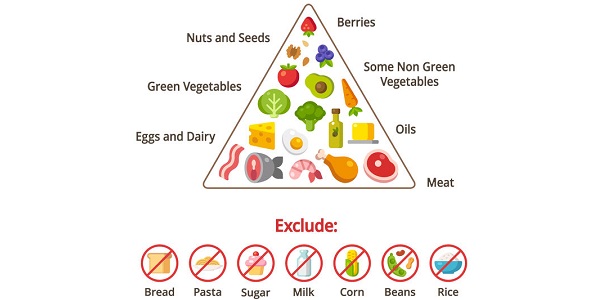What Is The Ketogenic Diet?
This type of diet involves ingesting large amounts of fats, a reasonable amount of protein, and very few carbohydrates (less than 50 grams of carbs). This process is categorized under banting. The term ketogenic itself refers to the state which the body enters as it uses up the fats and ketones (by-products of burning fat) as fuel. The result of this type of diet is weight loss. Appetite is suppressed as the levels of the hunger hormone, ghrelin, are reduced and body fat is burnt. This diet has also been used to treat epilepsy patients as well as other neurological conditions. The ketogenic diet is very similar to the Atkins diet, as it follows the first few steps of the Atkins diet. However, unlike the Atkins diet, this diet does not work in phases. The Atkins diet allows carbs to be reintroduced after a certain length of time.
What are some of the possible side effects of the ketogenic diet?
During the first two weeks, side effects can include headaches, constipation, fatigue, and dizziness, as the body adjusts to the diet. These are all short-term side effects. Long-term side effects are also possible. These include kidney stones, increased risk of bone fractures, and increased risk of higher cholesterol levels. Some women may also experience an interruption to their menstrual cycle. It should also be noted that there is a lack of long-term research data on the effects of this diet on the human body, despite that this diet was first proposed in the 1920s. It is advisable, as with any diet plan, to speak to your doctor before embarking on such a diet.
What does a ketogenic diet meal plan look like?
- Breakfast
Ideally, this would be up to four eggs with mushrooms, spinach, and onions, covered in olive oil and served with up to two ounces of cheddar cheese. This is a breakfast that contains less than 15 grams of carbohydrates from non-starchy vegetables (not bread), some proteins, and a great deal of fat. Also, there is a difference between good and bad fats. Bad fats are saturated fats which are linked to increased LDL-cholesterol; however, unsaturated fats, such as polyunsaturated and monounsaturated fats, are good fats. Consuming this type of fat is linked to an 11 to 19% lower risk of death.
- Lunch
An easy lunch would be a salad with non-starchy veggies, such as arugula, and avocados, mixed with a protein source such as eggs, tuna, chicken or beef, and sources of fats in the form of bacon, cheese, nuts, with olive oil as a dressing.
- Dinner
With this type of diet, it is recommended that at least four ounces of protein be consumed at night. This can be any meat or eggs. Added to that, large quantities of non-starchy veggies (broccoli or green beans, for example) should provide you with not more than 15 grams of carbohydrates. In addition, eat at least two tablespoons of fat (used during the cooking of the meat, olive oil drizzled over the veggies, or butter on the vegetables). In-between snacks: As with the other meals, no snack should have more than 15 grams of carbs, but should contain some protein and large amounts of fats. Snow peas dipped in peanut butter, and some cheese will do.

 Subscribe Now
Subscribe Now